House that is governed only

Or in case of theft detection, fire, water or gas leakage, with security system telephone warning to the person or public service in the home.
All this seems like a scientific fiction, but they are the possibilities that an incipient applied science will offer. This new science is home automation.
For a few years now, electronics are gradually spreading to every corner of our homes and in a short time the computer will own it. It has not been long since we imagined that in the future house were rigid metal voice robots (from one side to the other as servers).
This futuristic vision, however, has already been abandoned by the computer revolution. In the future it seems that the assistant of the house will be a network of computers that replace these robots; all appliances that work by plug can be connected to the computer and automated by local and remote controls.
For example, let's imagine that with a troubled time we leave home and when we are at work we realize that we have left the blinds open. A phone call will allow us to order window closures. Or imagine that when we spend a weekend outside we want it to be hot. We can stop on the road and call to give this order.
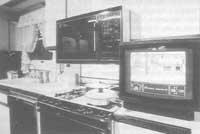
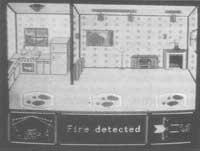
Through this phone call we would broadcast from the headset a microwave signal to our home computer. Once received and interpreted the signal, it would connect and start the shutter and heating motors.
If in today's homes there are only two TV screens and a single magnetoscope, it is impossible to see the same tape on both (unless very complicated connections are made) or record programs that are being released simultaneously on two networks. Or it is impossible to use the phone as an intercom. Creating a network that connects all these tools allows you to offer very wide options.
Today, on the other hand, there are more and more homes and in most cases very few are used, almost exclusively as calculators or as toys for children. Connecting the network and phone to the computer has practical applications that exceed everything imagined. If all of this is completed with a specific program (specific programs that program and control maintenance, cleaning and home conservation tasks), we will have a house that is governed alone.
This system is called Residential Bus. In electronics, the Bus (binary, unit system) is a physical link (cable, fiber optics, etc.) to which you can connect everything (washing machine, microcomputer, TV, telephone, etc. ). You can modify sound, images and numerical data.
The aim of the bus is therefore to enable the centralized and coordinated management of all automatic devices. For example, in case of a washing machine failure, the microprocessor will warn the computer and the computer, due to the corresponding solenoid valve, would cut the current and water supply.
The Home Bus System is an experimental reality. In the US and Japan (and soon also in the Netherlands and France) this system is being tested and we are talking about success.
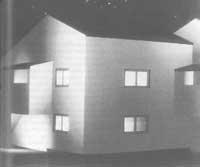
The immense advantages offered by this system make it very attractive, but they do. According to statistics, 10,000 people die each year in the US due to lack of exercise due to circulation and heart problems. But what is expected is no better. If domestic automation is expanded, it is estimated that in twenty years deaths from this cause will multiply by four.
There is another fear: the increased risk of domestic accidents. Filling the bathtub remotely or lighting the oven from the office requires closing the taps and remembering to disconnect the controls. And when there is no one at home, it can have terrible consequences.
However, it seems that the experts working on it are also expected to offer security systems against human errors.
The computer and telecommunications association has created the Telematic science, within which the development of the Home Bus System must be located. The basis of this new applied science, based on the home control by network, is constituted, as has been said, by the computer and all the devices connected to it, with possibilities of connection to the network practically unlimited. POV allows multiple orders to be transmitted simultaneously. This order can be issued directly via the keyboard or by phone from anywhere in the world (thanks to the cell encoder that will give access to the computer).
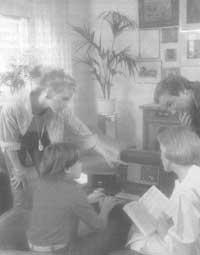
In case of being outside and wanting to start up some device, such as heating, it is called by telephone and through a portable transmitter pressing in the channel corresponding to the control of the heating is sent from the headset the signal that tunes the computer. The minicentral of the home computer will decode the signal and interpret that it is the channel corresponding to the heating and will fulfill the order. If we take into account that each of these minicentals has between 40 and 50 channels, we will observe the magnitude of the invention.
So far there have been numerous tests in Japan and the US, installing HBS in pilot houses. Therefore, in the new buildings it is considered that the time has come for the practical phase of massive incorporation of PORN. Another reason for this is the effort to reduce costs. According to calculations, when this system expands its implementation would not be more expensive than it currently costs to install a satellite dish. To this it is necessary to add the price of the computer.
Homes are expected to be sold with PB by the beginning of the following century, as they are currently sold with garage space or central hot water. Each classroom will have a plug programmed to interpret the HBS commands and will bring a direct connection point to the electrode systems. The computer can be connected to supermarkets and bank terminals; purchases can be made by phone. And in short, just like we take money out of the ATM and send texts by telefax, from home or office we will make accounting seats and invoice shipments in total comfort.
The REP is also useful in the industry and is already being applied. An American construction company controls the evolution of the works thousands of kilometers from the office. Also in some Japanese companies, production has been controlled remotely since 1983.
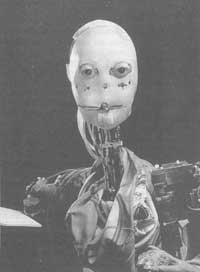
It is not difficult to imagine the consequences. More and more people will be able to work without leaving home. Shopping, banking, papelas, etc... They can be processed by VPP. When the system is more widespread, living near the workplace for people will not be as necessary and can be a way for morning traffic obstructions to disappear in several cities, as it will not be necessary to sign at eight in the morning.
Through normalization
Before deploying the system it is necessary to define the communication protocol, that is, the language to be used, the interfaces between each device and the domestic network and between it and the external networks. A universal rule must be put in place so that an appliance can connect to any network, regardless of who has installed it, regardless of its brand. Complete standardization is the condition for success: some basic electronic components will be the same for everyone and will be manufactured in large series in order to encompass products.
Unlike other sectors, the professionals of appliances, telephony, telecommunications and computer industry have immediately understood the need for the standard. They have joined together to standardize the domestic BUS and have decided to work together.
In Europe, the main entrepreneurs of the appliance sector will work on standards for the European industry of the sector. These companies are the Dutch Philips, the Swiss ABB, the British Telecom PLC, Thorn, Mullard and GEC, the French Thomson and Legrand, the German Siemens and AEG, the Italian Zanusi and finally IKERLAN in collaboration with FAGOR.
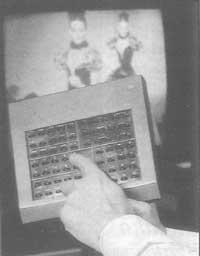
With this project, called “Home Systems”, 2,431, have begun in January this year and will analyze the fields of application of this new technology. Initially a minimum duration of two years is expected.
Japanese industrialists have made great strides in this field under the impulse of HITI (Minister of Local Industry). Your Home Bus seems to be ready for a year and in the USA they take the same path of normalization with the Smart House project.
It is true that there is still no global standard, but the exchange of information between different countries is constant. The Japanese, for example, have already changed their standard twice after international debates. It seems, then, that there will be no technological struggle around domotics. The struggle has been left for later, by the time the rules establish and the industrialists market their products, or for the years after 1990, scheduled date for the deployment of the home automation. At the moment these systems are sold both in Japan (they have opted to be the first to enter the market) and in the USA.
Buletina
Bidali zure helbide elektronikoa eta jaso asteroko buletina zure sarrera-ontzian











